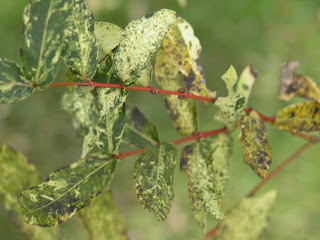These photos were taken at and around my home on a stunningly brilliant and breezy autumn afternoon, Sunday, October 11.

I am mixing some pictures of flowers in the garden and scenes from the roads that lead to Wit's End.


The curious organic creation above, a wonderful seed to gather for fall decorations, is the offspring of the osage orange tree. The wood of the tree when split open is a rather bright orange color, and the fruit of it has a delicately citrus smell. It lasts for months as a decorative element, and for many years I have collected them for fragrant arrangements. Normally they are plentiful, there are so many they are smashed all over the road from automobiles. This year, there are only a very few along the ditches. In the past they have usually been the size of large grapefruits - this year, the example above is more typical.


Last week I went to a local orchard to pick apples but guess what? There weren't any! They had all been picked in the first two weeks of the season - last month. Someone said, must have been a small crop. Oh, ya think?


The idea that toxic greenhouse gasses will reduce crop yields is a frightening notion. It seems inevitable considering the easily verifiable evidence of impacts occurring now, and at an accelerating rate. Above is a picture of the landscape I have loved and cherished for many years. Now, so many trees are bare.
It is important to keep in mind, there is no normal, natural reason for any of these treetops to be bare of leaves, and others to be thin. We have yet to have frost. The leaves should be turning shades of autumn glory.


This tree above has the leaves below, which are such typical examples of foliar damage from toxic greenhouse gas emissions.




I am going to show pictures of trees and shrubs followed by close-up views of their leaves. Every leaf is a poster child for the dangerous impacts of invisible, poisonous gasses. If you can't see the cellular damage, click on the picture. Like a magical microscope, it will become obvious.
There appears to be no chemical test to detect the effects of atmospheric poison. You have to go by the symptoms. And wow, just wow, the symptoms are abundant, ubiquitous, and in fact, universal.
Above, clematis, below, the astilbe Max gave me for Mother's Day, over ten years ago. It's true, there are some especially tender plants that are sensitive to cool temperatures and deteriorate even before frost - like basil. Many years I have annoyed myself by not collecting it early enough, and finding it brown. But that is not true for the plants posted here. They shouldn't have any browning, or loss of leaves, until frost, which hasn't yet occurred, although it is predicted.


Ivy everywhere is indicative of atmospheric pollution, and below a rather more exotic hydrangea, a climbing Japanese, is equally compromised.




I have avoided posting rose leaves, because they are known to be subject to so many diseases and pests aside from polluting greenhouse gasses - but here they are, the way they really look.




The sunflowers keeled over, that's not so unusual...
Below is a variegated willow I planted about 3 years ago.
Okay, lastly, here are the lotus leaves, which all by themselves convinced me that there is something going on in the air that is responsible for the widespread murder of vegetation I see, everywhere.


I haven't mentioned the pond lilies until now, which have seemed fairly robust. Well, that is now history. Their leaves are developing the same sort of damage evident in more delicate species.


Here is one pretty rose to feast upon, before reading one of the nastiest reports ever, linked below!

Here is the terrifying link about mass extinctions, which appear to be inevitable.

Here is the terrifying link about mass extinctions, which appear to be inevitable.
I suddenly remembered the book and the movie based upon it, "On The Beach." It's about an American submarine commander who is deep in the sea, when nuclear bombs are exploded. Everywhere, the lethal radiation fallout kills everyone in the northern hemisphere, so he directs his crew south, where they finally surface and then, just await their own demise, with the inhabitants of Down Under.
They know the radiation is going to reach them, eventually. It is a chronicle of human reactions to impending doom, the grief and fury they experience - and can be easily translated to what is going to occur when the average person realizes that we have sown the seeds of our own destruction, by thrusting fossil fuel emissions into the atmosphere that we, and plants, need to be pure to breathe.
It's easy to locate links to parts of the orignial movie, with Gregory Peck and Ava Gardner on youtube but also, there is a series that aired on Australia teevee, the first episode of which can be found here at On The Beach - and then there are many others easily found, for those who are interested!







































No comments:
Post a Comment